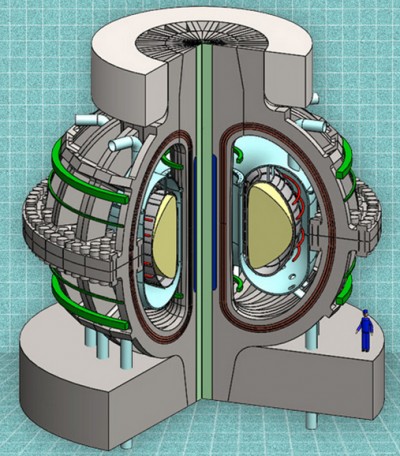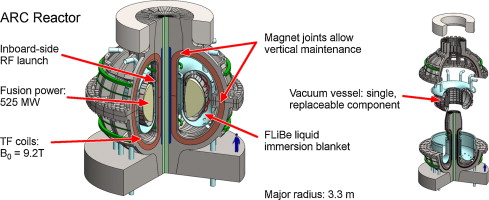August 12, 2015 – The promise of an affordable commercial fusion reactor continues to be ten years out. It was ten years out in 1990. Ten years out in 2000. And ten years out in 2010. There is pattern here. The promise of fusion is constantly receding into the future.
The technology most associated with fusion energy is called a tokamak and the organization trying to build one successfully is ITER. Back in 2012 I described the state of nuclear energy and the ITER project which was to begin construction this year with an expected completion date of 2019. Whether ITER gets completed on time it remains a very costly experiment at $40 billion U.S.
Engineers at Massachusetts Institute of Technology, however, feel that a tokamak fusion reactor doesn’t have to be as big as ITER.
Why?
Because of advances in superconductors made possible by the use of rare earths like barium copper oxide, it is possible to produce stronger magnetic field coils to withstand the 150 million Celsius (270 million Fahrenheit) temperatures generated within the plasma field contained by those coils.
The engineers have dubbed their concept, ARC, standing for Affordable, Robust and Compact. ARC will be a 270 Megawatt tokamak. It will be half the size of ITER, take much less time to construct, and will be much easier to manage for the purpose of design improvement and experiments. Instead of solid materials surrounding the fusion chamber, ARC uses liquid which can easily be circulated and replaced. The fluid as coolant will not be subject to solid degradation, and as a result costly maintenance and replacement, a weakness of the ITER tokamak design.
One of the great challenges in fusion energy is the initial energy input required to get energy out. With many designs to date the net yields have been either negative or far too small on the plus side. With the smaller form factor and different materials ARC is expected to be capable of energy output three times greater than input and with further design improvements could even achieve a multiple of five or six. At 270 Megawatts it would be capable of lighting and heating a small city.
The concept is described in the upcoming July release of the journal Fusion Engineering and Design.












